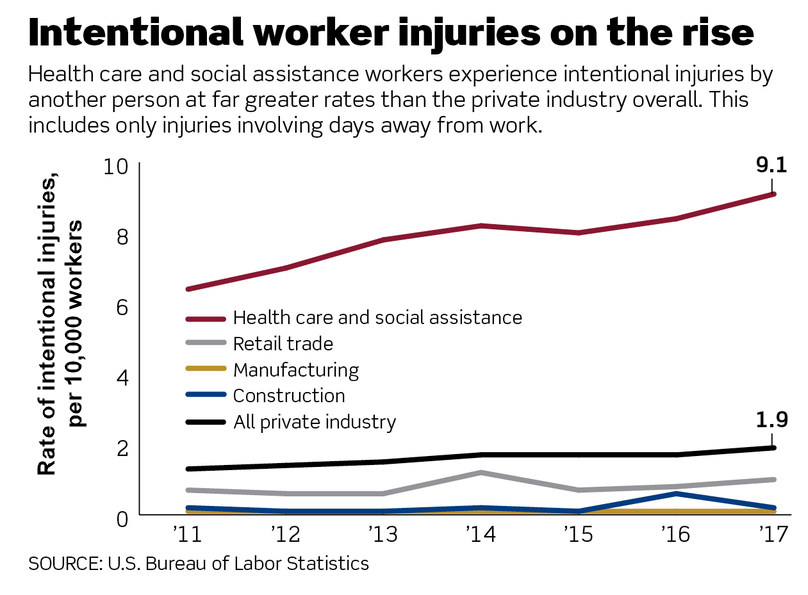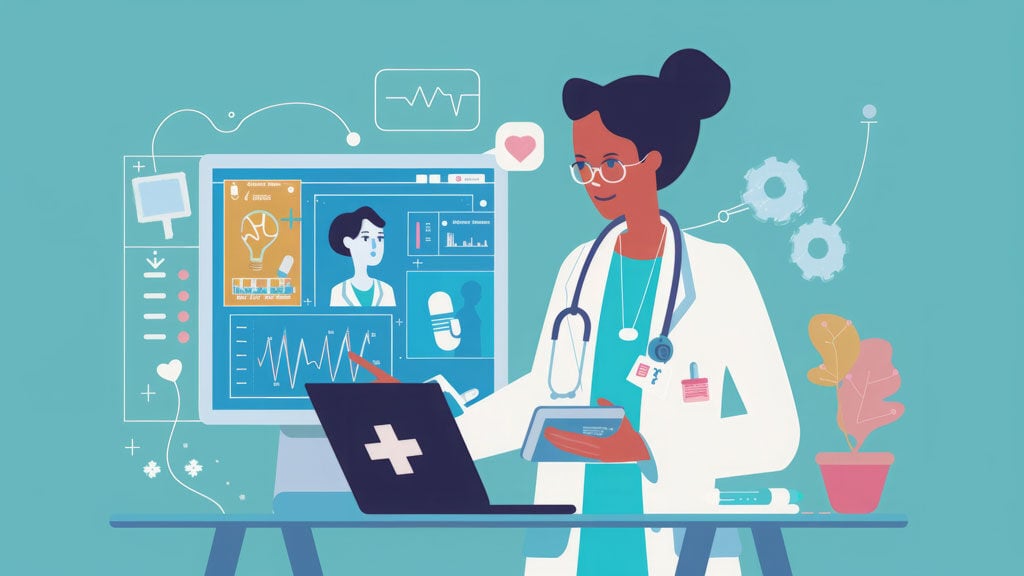There is no higher calling than to serve and care for others. Those that take up this altruistic vocation should be valued and respected. Unfortunately, there is a steadily growing trend of violence against healthcare workers throughout the country. They face an increasing threat of physical assault and verbal abuse. As illustrated in the chart below, the rates of intentional injury are far greater in healthcare than in any other sector; nearly four times as many according to the U.S. Bureau of Labor Statistics.

The explanation for these incidents, according to National Nurses United, is complicated and varied, but most are attributed to patients:
- Patients are disoriented due to illness or from the medication they are prescribed
- Others are violent because of illicit drug use, such as methamphetamines
- Feelings of losing control or grief also play a part for family members or loved ones. When pain, fear, grief and anger are present, it can be a recipe for disaster
The American College of Emergency Physicians reported that nearly 62% of ER physicians stated that they had been the victim of workplace violence in the past year. How do healthcare systems address these type of events?
The Joint Commission, National Nurses United and other accrediting bodies have recommended the following:
- Reporting incidents: Make sure events are reported in a timely fashion and are well documented. This is critical in understanding trends and evaluating strategies for prevention.
- Hospital policies: Create standard practices that address violence and abuse. Staff should know how the organization defines and responds to these situations.
- Environment changes: Employ locked doors, badges, panic alarms, surveillance, exit routes and security personnel with set parameters for quick action while maintaining location awareness of where the incident is taking place and quickly understand who is involved.
- Staff education: Prevention is key. Recognizing cues and learning the signs of behavior that may lead to a potential incident is the first step. Then knowing de-escalation techniques is the next step such as these by the Crisis Prevention Institute, The Crisis Prevention Institute: 10 De-Escalation Tips, "“A key challenge for nurses is learning to evaluate those situations and developing the awareness to deal with those situations or in some cases to just walk away. You have to make sure that the scene is safe. As nurses we can’t refuse to treat a patient. But we can make sure that the environment is safe for us to do that.” – JoAnn Lazarus, MSN, RN, CEN."
- Legal: States have begun legislating to advocate for healthcare workers by raising the penalties for assaulting emergency room staff. Previously in some parts of the country, a Class A misdemeanor was the punishment for an assault. Now we are seeing this offense designated as high as a third-degree felony. Hopefully this will underscore the severity of this offense and deter future aggressors from engaging in this act. Workplace violence should never just be part of the job.
At Innovative Medical Systems, we have been working with healthcare facilities to implement a staff assist/duress solution so that staff has a quick and reliable way to send an alert that they need assistance. Whether for a behavioral health unit, emergency room, long term care or maternity department, we have over twenty years of experience in assisting healthcare facilities in their efforts to provide safe environments. Our Solution Consultants help you design a financially scaleable strategy to serve the staff and the patients in your care. If you are interested in learning more about how we make it all work together in healthcare, please visit us at www.innovative-medical.com.


